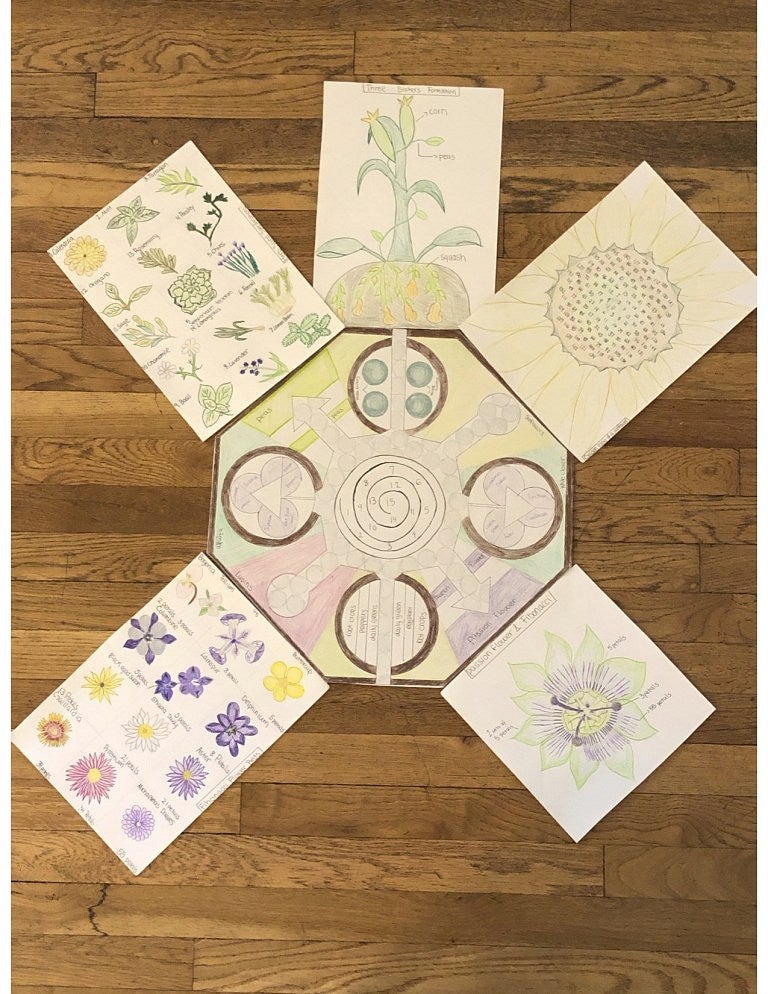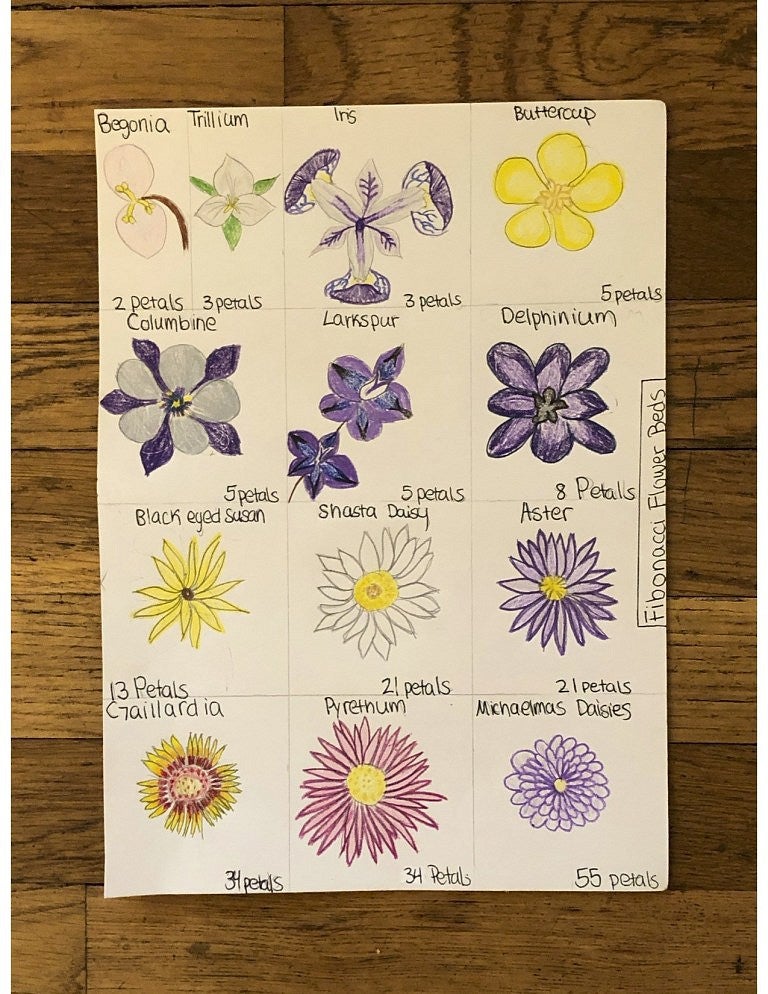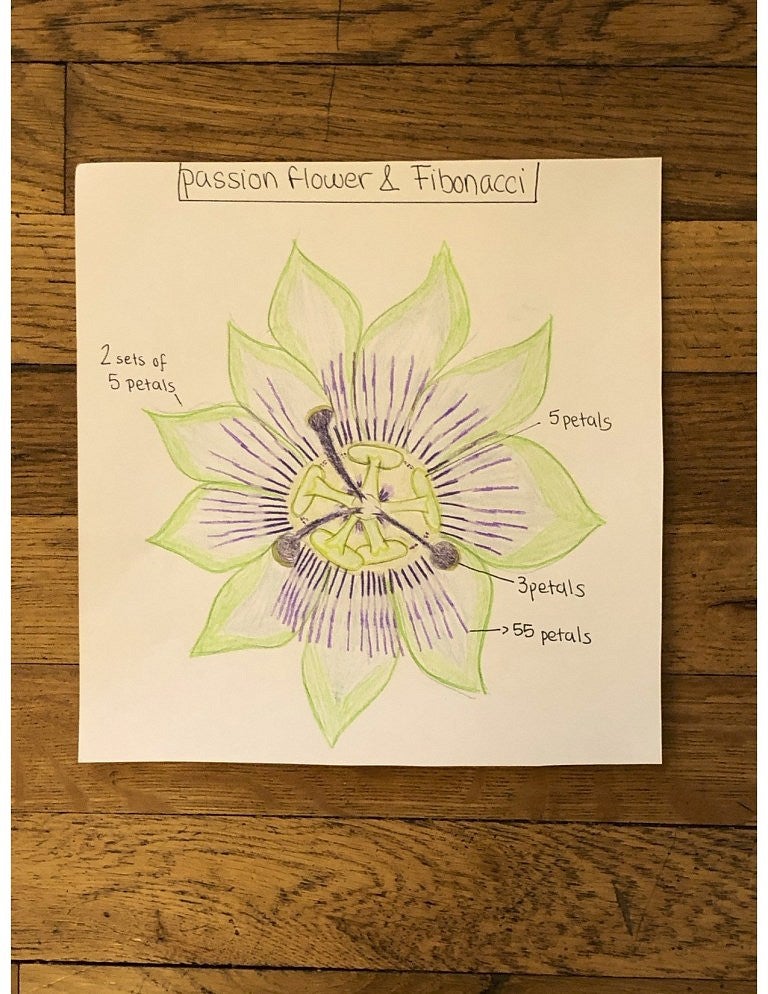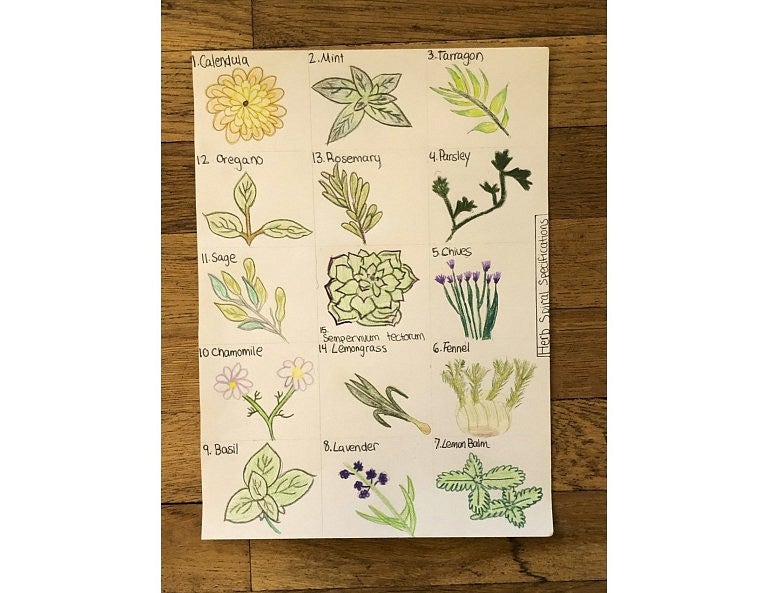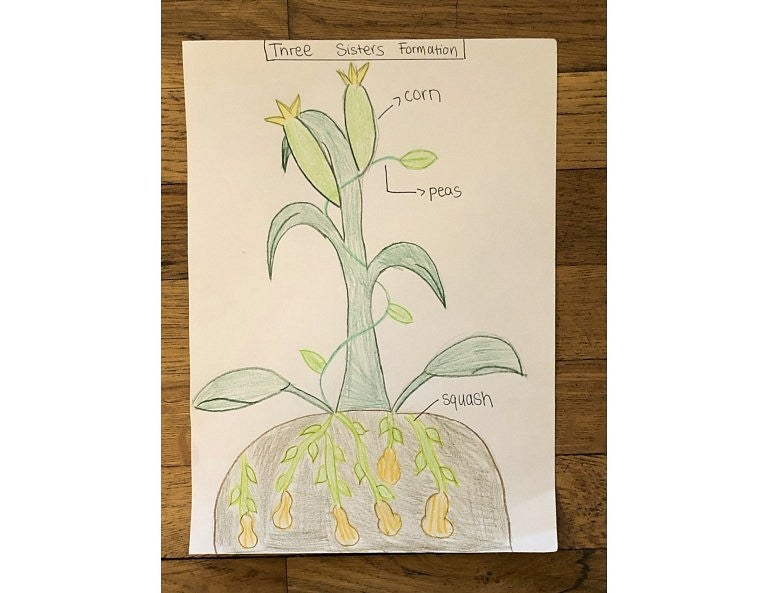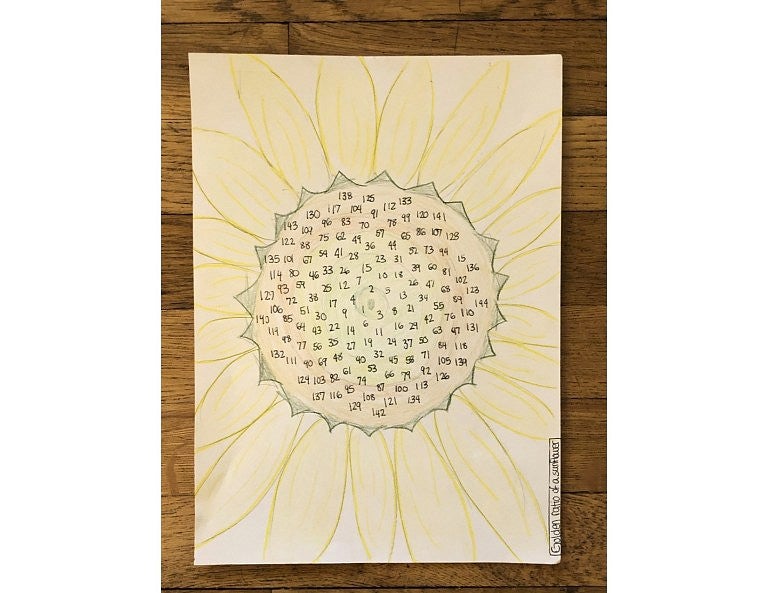For my project I have created a mandala garden that is both functional and aesthetically pleasing according to mathematical principles, chiefly the Fibonacci sequence. The choice to use a mandala garden was a very intentional one. The mandala has often been regarded as one of the best representations of the intersection of math, aesthetics, and art. The mandala shown here, formed by octagonal shapes and concentric circles, helps represent some of the basic mathematical principles found in nature. The mandala garden also allows for maximum space to be used in an efficient manner, as it provides pathways to access most of the garden, so that all space can be utilized.
Elements of symmetry, naturally forming Fibonacci sequences, use of mandalas and keyhole beds, and herb spirals all contribute to this garden. These elements not only allow for maximum efficiency of the garden, but also create aesthetically pleasing designs. While this garden may look like another garden, upon further inspection, the choices of plants, the uses of ratios, and the formation of spirals and patterns are all paying homage to the foundations of modern mathematics, the golden ratio, the Fibonacci sequence, and the logarithmic spiral. Alongside this, this garden is also meant to honor the naturally forming mathematically principles that people find so beautiful being pattern, symmetry, and bright colors. Not only is this garden both functional and intentionally created for the purposes of a multi-beneficiary ecosystem, it is also made beautiful by a rooted foundation in mathematics.
This piece was created for Chris Sinclair's HC 209H course, Math & Aesthetics. You can find more information about this piece and course here.


